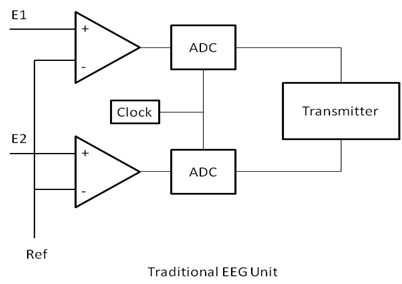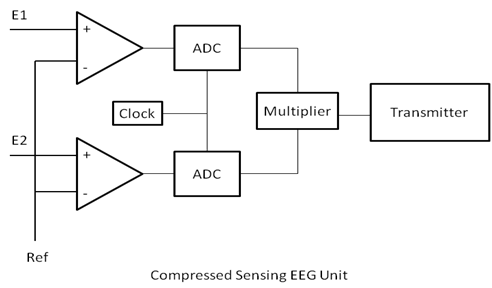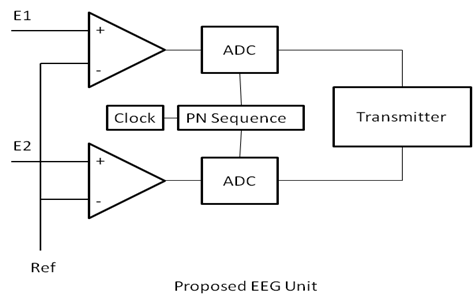|
In wireless health tele-monitoring, several health
indicating signals like EEG, ECG, MEG etc. are constantly
acquired from the patient and transmitted to a remote medical
facility for analysis. Such a system is usually called a
Wireless Body Area Network (WBAN). It has several advantages:
- The patient can live at the comfort of his/her own
place without the intrusion of an external paramedic. Service
of a paramedic is expensive and the patient might consider the
presence as an intrusion to privacy and security.
- In countries like India, where medical facilities at
remote rural locations are limited, such WBAN's can help in
monitoring the health of the populace.
The main challenge for a WBAN is to preserve its power so
that is lasts longer on a single charge. There are three main
power sinks - sensing, processing and transmission. Assuming
that we are to monitor EEG signals, a traditional EEG unit looks
like:

The signal is sampled and the sampled signal is
transmitted. Signal transmission consumes a lot of power, so it
needs to be reduced. To this end, Compressed Sensing (CS) based
techniques project the signal onto a lower dimension - this is
performed by a DSP chip. The compressed signal is finally
transmitted. Since the signal is compressed, the transmission
power consumption is reduced.

However, such an architecture increases the energy
requirement owing to the addition of the multiplier DSP chip.
We ask the question - can we not do away with the DSP
chip? can we not reduce the sensing energy as well? Our research
answers both in the affirmative. There is a simple answer to
both the questions - randomly under-sample the signal.
This reduces the sensing cost as well as the processing
cost; we do not require the multiplier any more - we compress
right when we sample! This is the schematic design

The challenge is in reconstructing the signals. Piecemeal
reconstruction of signals is almost impossible in this scenario.
We reconstruct the signal ensemble by accounting for
inter-channel correlations. Our proposed techniques perform at
par with state-of-the-art CS based methods but requires only
half their energy. We can make the sensor nodes of the WBAN last
about two times longer.
|